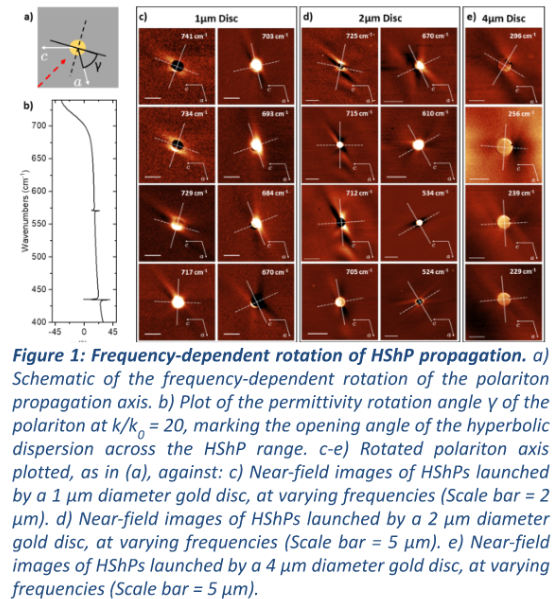Strong Coupling and Extreme Anisotropy in Infrared Nanophotonics
Josh Caldwell Vanderbilt University
The field of nanophotonics is based on the ability to confine light to sub-diffractional dimensions. In the infrared this requires the compression of the wavelength to length scales well below that of the free-space values. While traditional dielectric materials do not exhibit indices of refraction high enough in non-dispersive media to realize such compression, the implementation of polaritons, quasi-particles comprised of oscillating charges and photons, enable such opportunities. Two predominant forms of polaritons, the plasmon and phonon polariton, which are derived from light coupled with free carriers or polar optic phonons, respectively, are broadly applied in the mid- to long-wave infrared. However, the short scattering lifetimes of free-carriers results in high losses and broad linewidths for the former, while the fast dispersion and narrow band of operation for the latter result in significant limitations for both forms. Here we will discuss the opportunity to implement polaritonic strong coupling between different media in an effort to dictate the polaritonic dispersion relation, and thus, the propagation and resonant properties of these materials.
The talk will highlight the role of strong coupling between both plasmon and phonon polaritons in the context of infrared emitters in the form of localized phonon polariton nanostructures1 and Tamm phonon polaritons.2 Further, by employing the extreme anisotropy of low-symmetry monoclinic to triclinic crystals, novel optical phenomena such as hyperbolicity and shear polaritons.3 These hyperbolic shear polaritons result in a frequency-dependent shear force resulting in a rotation of the optical axis and thus, the polariton propagation direction and wavelength (Fig. 1). Implementation of strong coupling between free carrier plasmas and hyperbolic shear polaritons promise dynamic control of the polariton propagation.

- Lu, G. et al. Engineering the Spectral and Spatial Dispersion of Thermal Emission via Polariton–Phonon Strong Coupling. Nano Lett. 21, 1831–1838 (2021).
- He, M. et al. Deterministic Inverse Design of Tamm Plasmon Thermal Emitters with Multi-Resonant Control. Nat. Mater. 20, 1663–1669 (2021).
- Passler, N. C. et al. Hyperbolic Shear Polaritons in Low-Symmetry Crystals. Nature 602, 595–600 (2022).